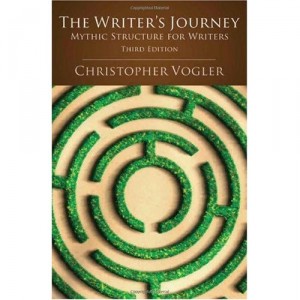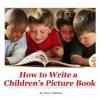2013 GradeReading.NET Summer Reading Lists
 Keep your students reading all summer! The lists for 2nd, 3rd and 4th, include 10 recommended fiction titles and 10 recommended nonfiction titles. Printed double-sided, these one-page flyers are perfect to hand out to students, teachers, or parents. Great for PTA meetings, have on hand in the library, or to send home with students for the summer. FREE Pdf or infographic jpeg.
See the Summer Lists Now!
Keep your students reading all summer! The lists for 2nd, 3rd and 4th, include 10 recommended fiction titles and 10 recommended nonfiction titles. Printed double-sided, these one-page flyers are perfect to hand out to students, teachers, or parents. Great for PTA meetings, have on hand in the library, or to send home with students for the summer. FREE Pdf or infographic jpeg.
See the Summer Lists Now!
The middle of a novel is one of the hardest places to plot. The set up is easy to imagine and the climax, of course, has to be exciting and emotional. But the sagging middle–how do you handle it?
The Hero’s Journey is one of the most useful of the 29 plot templates because it has such clearly defined stages.
The Hero’s journey handles the middle by starting with the idea that Act I is the normal world, but Act II is a new and different world and the main character’s job is to learn to deal with that world. For a romantic comedy, this might be the New World of courting a girl instead of using a girl. For a science fiction story, there is often an invented world with strange happenings and strange characters to negotiate. The New World just means that in contrast to the Normal World of Act I, something is new and difficult for the main character.One of the strengths of something like the Hero’s Journey is that it suggests typical events that will happen in certain stages of a story. It’s not that these are required and they are generic events in any case. However, it helps to know what are suggested or typical.
One of the first things a character needs to learn is the rules of the New World. A typical scene is a watering hole, a place where characters of this New World gather and interact. For example, in the original Star Wars movie, Luke and ObiWan go into town and stop at a cantina. Here, we see a wide range of alien species, meet Han Solo and see how he handles what life throws at him, and pull back the curtain a bit on ObiWan’s powers. The function of the watering hole is a sort of orientation to the New World.
Another option is to focus on tests that the main character will encounter. What difficulties will the main character encounter in this brave New World? Our romantic hero finds it hard to figure out how to order flowers for his new sweetie. Or in the sff, the main character has learn to eat whatever gross things aliens eat–and enjoy it.
At the same time, our main character is making allies and enemies, figuring out the political climate, or the local gang, or just how to stay safe. In the Lord of the Rings, this is where Frodo and the gang pick up the Ranger as a guide toward Rivendell. While the main villain needs to be clear in Act I, there are henchmen, allies of the villain, or subplot villains who can surface here.
Next, the Hero’s Journey points toward the midpoint of Act II, the Supreme Ordeal. What is the blackest moment you can imagine for your character? (Stop being nice! You MUST make him/her face the worst case scenario!) This must be a personally impossible moment, not just something generally bad within the context of the story. It’s the moment of despair which will contrast with the triumph at the end of the story.
For our romantic hero, it’s likely the moment he realizes that he’s a jerk and will never be right for Sweetie Pie. Or, it might be when Sweetie Pie dates his best friend. The key is to find the emotional pain. Why does Romantic hurt? Because he sees himself repeating his father’s mistakes, pushing Sweetie Pie away with his cruel words. Can he move past the ghosts of his past and find a new way to live? Right now, it appears that he can’t. Revel in the pain, don’t make light of it. Let the despair play out across one or more scenes.
For our sff story, it may the realization that the character can’t go back to his home world and must live in this alien world the rest of his/her life. All the uncomfortable things of the alien world pile up in this Supreme Ordeal and the pain of loss and separation intensifies.
So, I skipped a stage of the Hero’s Journey called Approach to the Inmost Cave: this is because I don’t know what needs to go there until I know what Supreme Ordeal the character must face. When I am planning a story, I figure out the Supreme Ordeal, then go back and figure out what I need to write to set up that Ordeal. If Sweetie Pie is dating Romantic’s best friend, we need to see that relationship set up, creating the dreaded triangle relationship. Think about what needs to happen to make the Supreme Ordeal a true ordeal. Then, make it happen.
The character comes out of the Supreme Ordeal changed in some way: there is a resolve to do things different than Dad. There is a glimmer of an idea about how to get back home (or how to settle into the alien world as home).
Things aren’t smooth and easy after the Supreme Ordeal, but the character has changed in some way. S/he has a new way of approaching life. And indeed, at the climax of Act II, the character often wins in some way. The Hero’s Journey calls this the Reward or Seizing the Sword. There’s a hard-won confidence, a bright new determination, or a rescue of Sweetie Pie from Best Friend’s evil clutches. Sometimes, there is a physical reward: a doctor finds a cure, treasure is uncovered, or Sweetie Pie and Romantic have supper without fighting.
This isn’t the end of the story, there is still much to cover in Act III. Can this change be permanent or is it fleeting? Will this cure truly work on the population of New York City? Will the new confidence fall apart at the first sign of another suitor for Sweetie Pie? And when Dad comes to meet Sweetie Pie, will that destroy the relationship?
But it is a completion of Act II, the middle of the story. Thanks to the Hero’s Journey!







 How to Write a Picture Book
How to Write a Picture Book